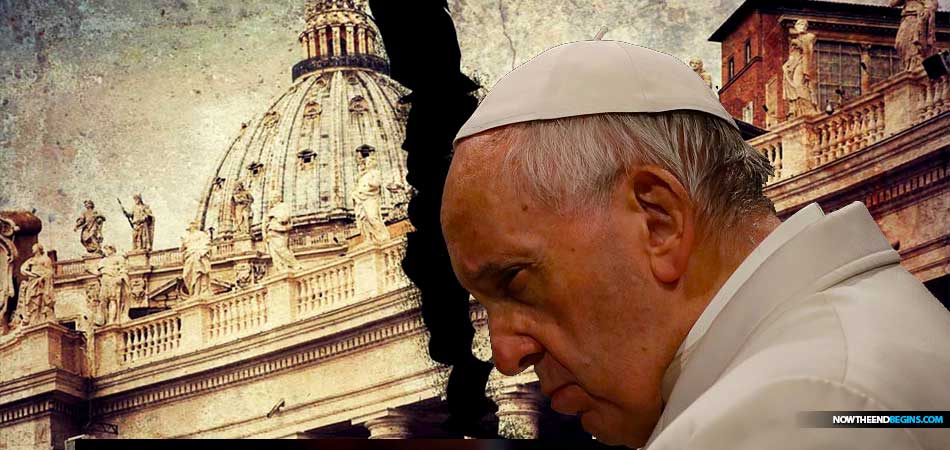
Across every continent, in every country, members of the Catholic Church “find themselves divided against one another,” writes the New York Times columnist Ross Douthat in his new book, To Change the Church.
"And the woman was arrayed in purple and scarlet colour, and decked with gold and precious stones and pearls, having a golden cup in her hand full of abominations and filthiness of her fornication: And upon her forehead was a name written, MYSTERY, BABYLON THE GREAT, THE MOTHER OF HARLOTS AND ABOMINATIONS OF THE EARTH." Revelation 17:4,5 (KJV)
EDITOR'S NOTE: The true history of the Catholic Church begins with the weakening of Rome as a world political power, and it's hostile takeover of Biblical Christianity in a series of moves beginning with Constantine's Edict Of Milan in the early 300's AD. Then in 1054, with the East to West 'Great Schism', the Roman Church split to form the Eastern Orthodox version of Catholicism. In 1517, Martin Luther led a revolt against the Catholic Church with his '95 Theses' nailed to the church door, and the Protestant Reformation was born. In our day, Pope Francis is working on a split that may just be the biggest one yet, due if for no other reason, the sheer size of the Vatican at roughly 1.3 billion Catholics.
On one side stand the orthodox, who see doctrine and tradition as the best antidote to a changing world. On the other stand the liberals, who yearn for a Church that focuses on pastoring rather than enforcing rigid rules. This “widening theological and moral gulf,” Douthat argues, is potentially “wider than the chasm that separated Catholicism from Orthodoxy, and later from Lutheranism and Calvinism.”
That’s a bold claim to make. After all, the schisms of East and West, Catholic and Protestant, were world-shaking, often bloody events. But in today’s Church—and specifically in this pope—Douthat sees the possibility that the Roman Catholic Church will once again break apart.
Ostensibly, his beef is with Pope Francis, whom Douthat paints as an unyielding and stubborn manager who has spent his five years in Rome failing to clean up the Vatican’s messes, hurling insults at conservative clerics, and pushing radical doctrinal changes without buy-in from major wings of the Catholic hierarchy. He writes skeptically about Francis’s imagery and rhetoric of mercy, from pictures of the pontiff kissing a man covered in boils to his controversial declaration, “Who am I to judge?” about gay men searching for God. But at its core, Douthat’s book is about a vast, premodern institution’s halting evolution into modern times, and whether it can sufficiently adapt to maintain unified influence over 1.3 billion adherents spanning Africa to Asia to the Americas. “This is a hinge moment in the history of Catholicism,” Douthat writes. While he is unlikely to change many minds about controversial Catholic issues or reshape people’s opinions of the pope, Douthat is digging at a question present in every aspect of contemporary culture and politics: How can those who primarily wish to preserve their culture live in community with those who cheer for inexorable change?
In a roundabout way, the pope’s pastoral orientation could be read as a response to the rise of nation states, capitalism, and globalization. The sheer scale of the Catholic Church strains against the imperative of doctrinal uniformity. As Douthat writes, the Church’s influence over secular politics has declined sharply; the idea of papal states, or even a U.S. president being compromised by his loyalty to the pope, seems bizarre today. And the role of the bishop of Rome has become marketed “as the globetrotting do-gooder CEO of Catholicism, Inc.” rather than spiritual father, Douthat argues: “Each pope is treated not just as the supreme governor of the church but as its singular embodiment, the Catholic answer to Gandhi or Mandela, the Beatles or the Stones.” Francis’s solution is to embrace a flexible, ecumenical spirit, both within Catholicism and without: It’s no coincidence that he has put rapprochement with Roman Catholicism’s closest cousins, the Lutheran and Orthodox churches, high on his priority list over the last five years.
source
No comments:
Post a Comment